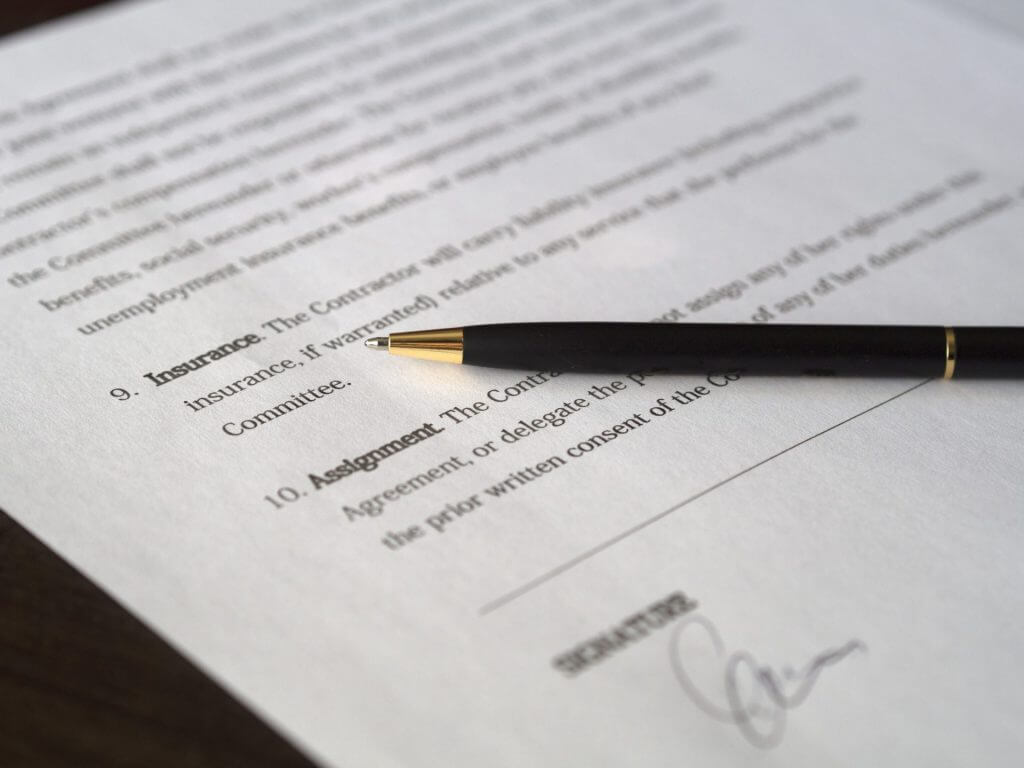Having your documentation in order is fundamental for a successful immigration process and family reunification is no exception. So today we will look at what Form I-130 is, who needs it, and how to file effectively.
If you need help gathering or completing your documentation, Urbina Immigration Law can assist you. Do not risk the success of your immigration process. Contact our immigration attorneys and get the quality legal help you need to file a family petition application.
Table of Contents
How to fill out Form I-130 step-by-step
In order to correctly complete the Form I-130, it is advisable to follow the steps below:
Step 1: Completing the Petitioner (Sponsor) Information
In the first section of Form I-130, the petitioner must specify what kind of family relationship he/she has with the beneficiary as well as certain personal information such as name, address, employment history, residency history, marital history, etc.
Step 2: Complete the Beneficiary (Sponsored Relative) Information
Beginning in Part 4 of Form I-130, you will need to include the beneficiary’s information (such as name, address, etc.) and relationship to the sponsor (petitioner). It is vitally important that you complete this part carefully, as it will serve to establish the family connection.
Step 3: Declaration, contact details and signature of the applicant
Finally, in section 6, the petitioner must provide a signed statement certifying under penalty of perjury that all information provided is authorized, verified, complete, and truthful, and authorizing the release of data for U.S. immigration enforcement.
Step 4: Attach Documents and Payment
Finally, add the necessary supporting documents, such as birth certificates, along with payment of the appropriate fees before submitting Form I-130.
Correctly completing the Form I-130 is critical to the family reunification process. Therefore, it is advisable to seek an immigration attorney to help you fill out and gather the necessary documentation. Don’t risk your family’s future. Speak to our attorneys today and secure a reunion with your loved ones.
What is Form I-130?
Form I-130 is an application for alien relatives who wish to obtain permanent to obtain permanent residence in the U.S. in the U.S. through a U.S. citizen or permanent resident relative. This serves to establish the existence of a family relationship between the two.

Who can file Form I-130?
The Form I-130 may be filed by U.S. citizens for spouses, children, relatives, and siblings. Permanent residents, on the other hand, may file for spouses and unmarried children.
Having the help of an immigration attorney is key to making sure that both you and your family member can file an I-130 petition. Don’t risk a reunion with your family. Contact our attorneys and secure the future of your loved ones.
Who cannot file Form I-130?
Some people are excluded from the family reunification process. Even if a family relationship exists, the following persons cannot file Form I-130:
- Grandparents, grandchildren, nieces, nephews, aunts, uncles, cousins or in-laws.
- Adopted children over 16 years of age.
- Biological relatives who obtained residency/citizenship by adoption.
- Married stepparents/ stepchildren over 18 years of age.
- Spouses if the ceremony was not physically present.
- Spouses who acquired residency by previous marriage without naturalization or 5 years of residency.
- Married spouses during immigration or convenience proceedings.
- Family members involved in fraudulent marriage.
It is crucial to understand exceptions for filing Form I-130 with the additional required documentation. At Urbina Immigration Law we can help you. Contact us and get the legal help you need to avoid difficulties in your immigration process.
What documents should I attach to Form I-130?
Along with the Form I-130, you will need to attach certain additional documentation as evidence of your relationship to the relative for whom you are filing. Some of the documents you can use are:
- Proof of sponsor’s citizenship or residency (birth certificate, naturalization certificate or U.S. passport).
- Proof of the family relationship between beneficiary and sponsor (birth certificates, identity documents, marriage certificate, etc.).
- Proof of marital authenticity (joint contracts, bank statements and photographs).
- Evidence of name change (legal order of name change).
- Proof of the beneficiary’s nationality (birth certificate and passport).

Submitting all necessary documents in a timely manner is key to ensuring a fast and effective Form I-130 process. For this reason, it is essential to have an immigration attorney to help you gather and complete the necessary documentation. Contact our professionals today and let’s get your paperwork in order.
Where should I file my Form I-130?
In the table below you will find the locations to which you should send your Form I-130 based on your specific location:
| Location | Address for USPS | Address for FedEx, UPS, DHL |
| Reside at specified locations (1) and file Form I-130 only | USCIS Secure Location (Lockbox) in Phoenix, AZ | USCIS, Attn: I-130, P.O. Box 21700, Phoenix, AZ 85036-1700 |
| Reside at specified locations (2) and file Form I-130 only | USCIS Secure Location (Lockbox) in Elgin, IL | USCIS, Attn: I-130, P.O. Box 4053, Carol Stream, IL 60197-4053 |
| Reside outside the U.S. and file only Form I-130 | USCIS Lockbox in Dallas, TX | USCIS, Attn: I-130, P.O. Box 4053, Carol Stream, IL 60197-4053 |
| File Form I-130 and I-485 at specified locations (3) | USCIS Lockbox Location in Chicago, IL | USCIS, Attn: AOS, P.O. Box 805887, Chicago, IL 60680 |
| File Form I-130 and I-485 at specified locations (4) | USCIS Secure Location (Lockbox) in Phoenix, AZ | USCIS, Attn: AOS, P.O. Box 20500, Phoenix, AZ 85036-0500 |
- List of locations for the first case: Alaska, American Samoa, Arizona, California, Colorado, Commonwealth of the Northern Mariana Islands, Florida, Guam, Hawaii, Idaho, Kansas, Montana, Nebraska, Nevada, New Mexico, North Dakota, Oklahoma, Oregon, Puerto Rico, South Dakota, Texas, Utah, U.S. Virgin Islands, Washington and Wyoming.
- List of locations for the second case: Alabama, Arkansas, Armed Forces Americas, Armed Forces Europe, Armed Forces Pacific, Connecticut, Delaware, Georgia, Illinois, Indiana, Iowa, Kentucky, Louisiana, Maine, Marshall Islands, Maryland, Massachusetts, Michigan, Micronesia, Minnesota, Mississippi, Missouri, New Hampshire, New Jersey, New York, North Carolina, Ohio, Palau, Pennsylvania, Rhode Island, South Carolina, Tennessee, Vermont, Virginia, Washington, D.C., West Virginia and Wisconsin.
- List of locations for the third case: Alaska, California, Commonwealth of the Northern Mariana Islands, Connecticut, Delaware, District of Columbia, Florida, Georgia, Guam, Hawaii, Illinois, Indiana, Iowa, Kansas, Maine, Maryland, Massachusetts, Michigan, Minnesota, Missouri, Nebraska, New Hampshire, New Jersey, New York, North Carolina, North Dakota, Ohio, Oregon, Pennsylvania, Puerto Rico, Rhode Island, South Carolina, South Dakota, Texas, U.S. Virgin Islands, Vermont, Virginia, Washington and West Virginia.
- List of locations for the fourth case: Alabama, Arizona, Arkansas, Colorado, Idaho, Kentucky, Louisiana, Mississippi, Montana, Nevada, New Mexico, Oklahoma, Tennessee, Utah and Wyoming.
What if any of the additional documents for Form I-130 are missing?
In case you do not have any of the requested documents, you must submit a letter from the relevant authorities to confirm that it does not exist. Please note that USCIS may send you a Request for Evidence (RFE) or even deny your application in case of lack of supporting documentation.
How long does it take to process the Form I-130?
The processing time for the I-130 petition varies depending on the family relationship and USCIS workload. For immediate relatives of permanent residents, it can take anywhere from 5 to 37 months. Immediate relatives of citizens, on the other hand, must wait between 5 and 16 months.
Is there any way to speed up the process?
You may be able to file a special petition with USCIS to expedite the processing of your I-130 petition. However, the agency will usually only consider this kind of petition if there are urgent humanitarian reasons or a special request from the U.S. government.
Do I have to pay a fee to file Form I-130?
Yes. The filing fee for Form I-130 is $535 and can be paid by check or credit card, using Form G-1450.
What happens if my I-130 petition is denied?
If USCIS denies your I-130 petition, you will receive a Form I-797 (Notice of Action) in the mail. However, please note that you may file an appeal of the decision with the Administrative Appeals Office (AAO), as long as you do so within 30 days (from the day the notice was mailed).

Form I-130 approved, what’s next?
Once your I-130 petition has been approved, your family member will be able to apply for his or her green card. In the case of an immediate family member (parents, spouses or unmarried children under 21 years of age) , they may do so immediately through Form I-485. Otherwise, they may have to wait a while to start the status adjustment.
For this reason, having the help of an immigration attorney is essential to simplify and expedite the process. Don’t risk reuniting with your loved ones by navigating the immigration system on your own. Contact one of our attorneys and take the next step to secure your family’s future in the United States.
Sources
USCIS – I-130, Petition for Alien Relative Petition
USCIS – Family Reunification Parole Processes
USCIS – Direct Filing of Form I-130
Other resources
How to obtain a Green Card in the United States – Updated Guide
What are the Green Card categories?
What is Form I-485 and how to apply for permanent residence
How to apply for American residency by family petition, step by step
What are the requirements for family reunification in the United States?
Family Reunification Parole in the United States: A Complete Guide
Form DS 260: The essential step for your immigrant visa
Family sibling petition: what you need to know as a U.S. citizen
Family reunification in the U.S.: At what age can a child petition for his or her parents?


